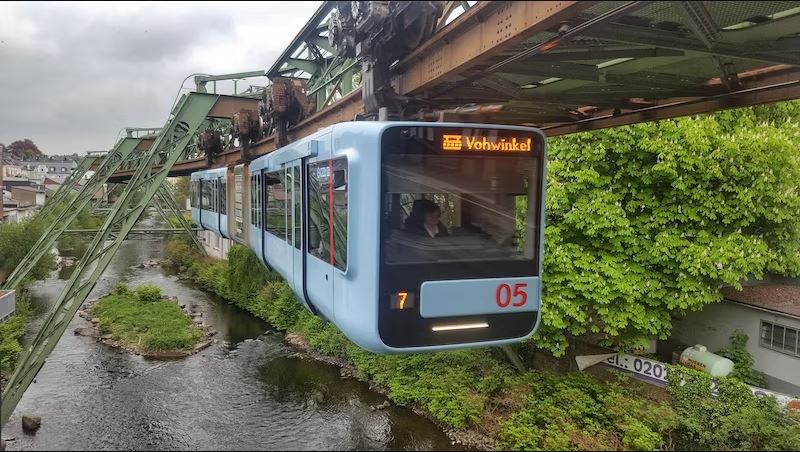Efficient and sustainable transportation solutions have become increasingly crucial in today’s world, especially in countries grappling with traffic congestion and inadequate public transportation infrastructure. The Philippines, with its bustling cities and growing urban population, is no exception. As the demand for innovative transportation options continues to rise, the spotlight has turned towards ropeway systems. In this blog post, we will explore how ropeway system solutions in the Philippines are revolutionizing transportation, offering a viable alternative to traditional modes of travel.
I. Understanding Ropeway Systems
Ropeway systems, often referred to as aerial cable cars or gondolas, operate using a network of suspended cables and cabins. These systems can vary in design, including gondolas, aerial trams, and cable cars, each offering unique benefits. The primary advantage of ropeway systems lies in their ability to traverse challenging terrains and connect areas that are otherwise difficult to access. This opens up a world of possibilities for transportation in congested urban areas, hilly regions, and even across bodies of water.
II. Ropeway Systems in the Philippines
With the Philippines facing pressing transportation challenges, such as traffic congestion and insufficient public transportation infrastructure, ropeway systems offer a promising solution. These systems can significantly reduce traffic congestion on roads, as they operate independently of ground-level traffic. Additionally, they require less physical space compared to traditional modes of transportation, making them ideal for densely populated areas.
To understand the potential impact of ropeway systems in the Philippines, we can look to successful implementations worldwide. For instance, the Emirates Air Line in London and the Roosevelt Island Tramway in New York City have transformed transportation in their respective cities, providing efficient and scenic alternatives to commuters. These examples demonstrate that ropeway systems can enhance mobility, reduce travel times, and improve the overall quality of transportation.
III. Benefits of Ropeway Systems
Ropeway systems bring numerous advantages to the table, making them an attractive option for transportation development in the Philippines.
Economically, ropeway systems offer cost-effective solutions. Their construction requires less time compared to traditional transportation infrastructure, resulting in shorter project timelines and reduced disruption to existing urban environments. Moreover, their low maintenance requirements translate into long-term cost savings.
From an environmental standpoint, ropeway systems boast several compelling benefits. They have a significantly lower carbon footprint compared to road-based transportation, reducing greenhouse gas emissions and air pollution. Additionally, their quiet and energy-efficient operations contribute to a more sustainable urban environment.
On a social level, ropeway systems improve accessibility and mobility for all members of society, including those with limited physical abilities. They provide reliable and convenient transportation options, ensuring that no one is left behind. Furthermore, ropeway systems can boost tourism by offering scenic and unique travel experiences, attracting both local and international visitors.
IV. Ropeway System Solutions in the Philippines
In the Philippines, several companies specialize in designing, constructing, and maintaining ropeway systems. These solution providers offer comprehensive services, from initial feasibility studies and planning to installation and ongoing maintenance.
To understand the potential impact of ropeway systems in the Philippines, we can examine successful case studies. For instance, the Sandugo Cable Car in Bohol has revolutionized transportation on the island, connecting key tourist attractions and facilitating ease of travel for locals and visitors alike. Additionally, the upcoming Pasig River Cable Car in Metro Manila promises to provide a sustainable and efficient mode of transport across the city’s busiest waterway.
V. Challenges and Considerations
While ropeway systems offer promising solutions, implementing them in the Philippines does come with certain challenges and considerations. Terrain constraints, such as rugged mountains or bodies of water, need to be carefully evaluated during the planning and design phases. Additionally, public acceptance and support are crucial to the success of these projects, necessitating robust community engagement efforts. Furthermore, navigating the regulatory landscape and securing necessary permits can pose challenges that must be addressed to ensure smooth implementation.
Takeaway
As the Philippines seeks innovative solutions to its transportation challenges, ropeway systems emerge as a game-changer. By revolutionizing transportation, these systems offer a way to alleviate traffic congestion, enhance mobility, and reduce environmental impact. The economic, environmental, and social benefits of ropeway systems make them a compelling choice for urban planners, transportation professionals, and policymakers. With ongoing developments in the field and successful case studies to draw inspiration from, the time is ripe to explore and invest in ropeway system projects in the Philippines. By embracing this sustainable and efficient transportation solution, the Philippines can pave the way towards a brighter future of urban mobility and development.

